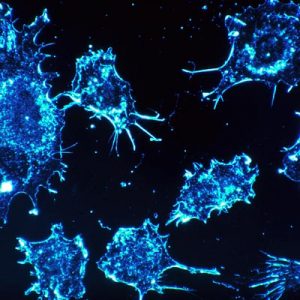Darkfield microscopy
Darkfield microscopy delivers an early, comprehensive diagnosis

Darkfield diagnosis is a specialised form of diagnosis, for which a small drop of capillary blood is drawn from the patient’s finger. The blood can then be examined for a prolonged period through a darkfield microscope, magnified by up to 1200x. This microscope is equipped with a special condenser lens which renders everything present in the blood optically visible – without obscuring any particles, substances, fungi, viruses etc., and without the need to stain the cells. With the darkfield microscope we can truly look into the blood microcosm. This enables us to observe phenomena that would otherwise be invisible, enabling us to draw conclusions about existing diseases, but also about conditions that manifest tendencies towards disease in the future.
Darkfield microscopy is an invaluable aid for evaluating and monitoring the course of diseases. It serves as an important indicator diagnosis, because it shows changes in the medium, hyperacidities, clotting disorders, oxygen deficiency conditions, organ weaknesses, bacterial and parasitic burdens, and much more. Therefore, it is a valuable supplementary diagnosis to the standard laboratory analyses: It makes things visible that cannot otherwise be seen, and these can be used to define implications for the therapy.
The aim of the diagnosis is to identify microorganisms present in the blood, and in addition to discern the conditions of individual organs, organ systems and body regions. It is also helpful for making an accurate evaluation of the course of the therapy.

